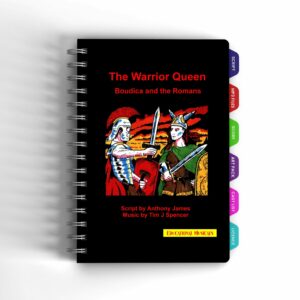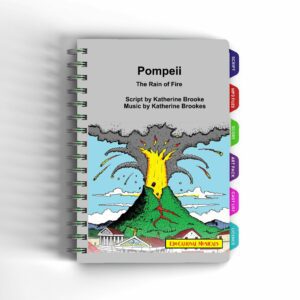Romans and Celtic Primary School Resources are important historical periods that are an important part of the UK History curriculum. These two stories, provide a rich educational experience for your students, allowing them to develop a deeper understanding of our own heritage and how these events fit into the broader context of world history.
A Romans and Celtic Primary School Resource – The Roman Conquest of Britain
This was a key event in ancient history, as it marked the expansion of the Roman Empire into the far reaches of northern Europe. The conquestof Britain started in AD 43, under the leadership of Emperor Claudius, and went on for several decades.
There was a problem as they were met with fierce resistance from native Celtic tribes, particularly led Boudica, whose revolts highlighted the challenges the Romans faced. We have published a musical on this rebellion taht helps your Romans and Celtic Primary School Resources.
A Romans and Celtic Primary School Resource – The Warrior Queen – Boudica and The Romans
 A Celtic storyteller and a Roman historian tell the story of the Warrior Queen, Boudica, who leads a revolt against the Romans, destroying three cities. It goes on to show that after a great battle where her army is destroyed she decides to avoid capture by taking poison.
A Celtic storyteller and a Roman historian tell the story of the Warrior Queen, Boudica, who leads a revolt against the Romans, destroying three cities. It goes on to show that after a great battle where her army is destroyed she decides to avoid capture by taking poison.
This show provides an insight into the worlds of both the Celtic natives and the Roman invaders while chronicling the clash of two very different cultures.
Unfortunately for her the Romans had a series of very experienced and skilled commanders like Agricola, who were able to gradually secured key territories, they then went on to build their famous Roman roads and other developments that for several decades bought peace to England. There are still today examples of the culture and the buildings they introduced, such as Hadrian’s Wall.
Romans and Celtic Primary School Resources are important to understand the difference from before Roman apeared. Celtic art, folklore, and daily life can be intriguing subjects that help students develop creativity and imagination. Through stories about druids, warriors, and ancient rituals, students can explore the blend of history and mythology, enriching their literary and storytelling skills.
If you are a subscriber to our community there are several stories in our history bites that will help your next class, to register please go to https://www.history-portal.com/member-registration/
We also have a further Romans and Celtic Primary School Resource a play about the catastrophic eruption of Mount Vesuvius in 79 AD that led to the tragic end of the Roman city of Pompeii.
https://www.historic-uk.com/HistoryUK/HistoryofEngland/Boudica/
A Romans and Celtic Primary School Resource – Pompeii – The Rain of Fire
 It is a musicals that starts with a group of archaeologists who are excavating part of what was once Pompeii. As the people of Pompeii are preparing for the festival of Vulcanalia, Pliny the Younger appears and helps to recount the story of what actually took place nearly 2,000 years ago, including the part his father, Pliny the Elder, played in the story.
It is a musicals that starts with a group of archaeologists who are excavating part of what was once Pompeii. As the people of Pompeii are preparing for the festival of Vulcanalia, Pliny the Younger appears and helps to recount the story of what actually took place nearly 2,000 years ago, including the part his father, Pliny the Elder, played in the story.
Although created as a musical, Pompeii is a fictional story accurately based on the historical facts known about Pompeii.
You can download it at https://www.history-portal.com/product/pompeii/
It all happened, we think, due to a violent release of volcanic gases, ash, and pumice, that created a towering column that reached over 20 miles into the atmosphere.
The eruption was of lavas and fragments of rock that flew up from the volcano, swiftly engulfed Pompeii and nearby settlements, burying them beneath layers of ash and debris. The speed and intensity of these surges caught the inhabitants off guard, leaving them little time to escape. The city’s buildings, artifacts, and even the remains of its citizens were remarkably preserved by these volcanic materials, allowing archaeologists to learn so much about in the ancient Roman world.
More importantly this gave us an understanding of the effects of volcanic activity and disaster preparedness. Pompeii’s ruins have also told us so much about Roman architecture, art, culture, and, in fact, daily life.
More importantly it reminds us of the fragility of human life in the face of nature’s fury and the importance of studying past disasters to help us in the future.
